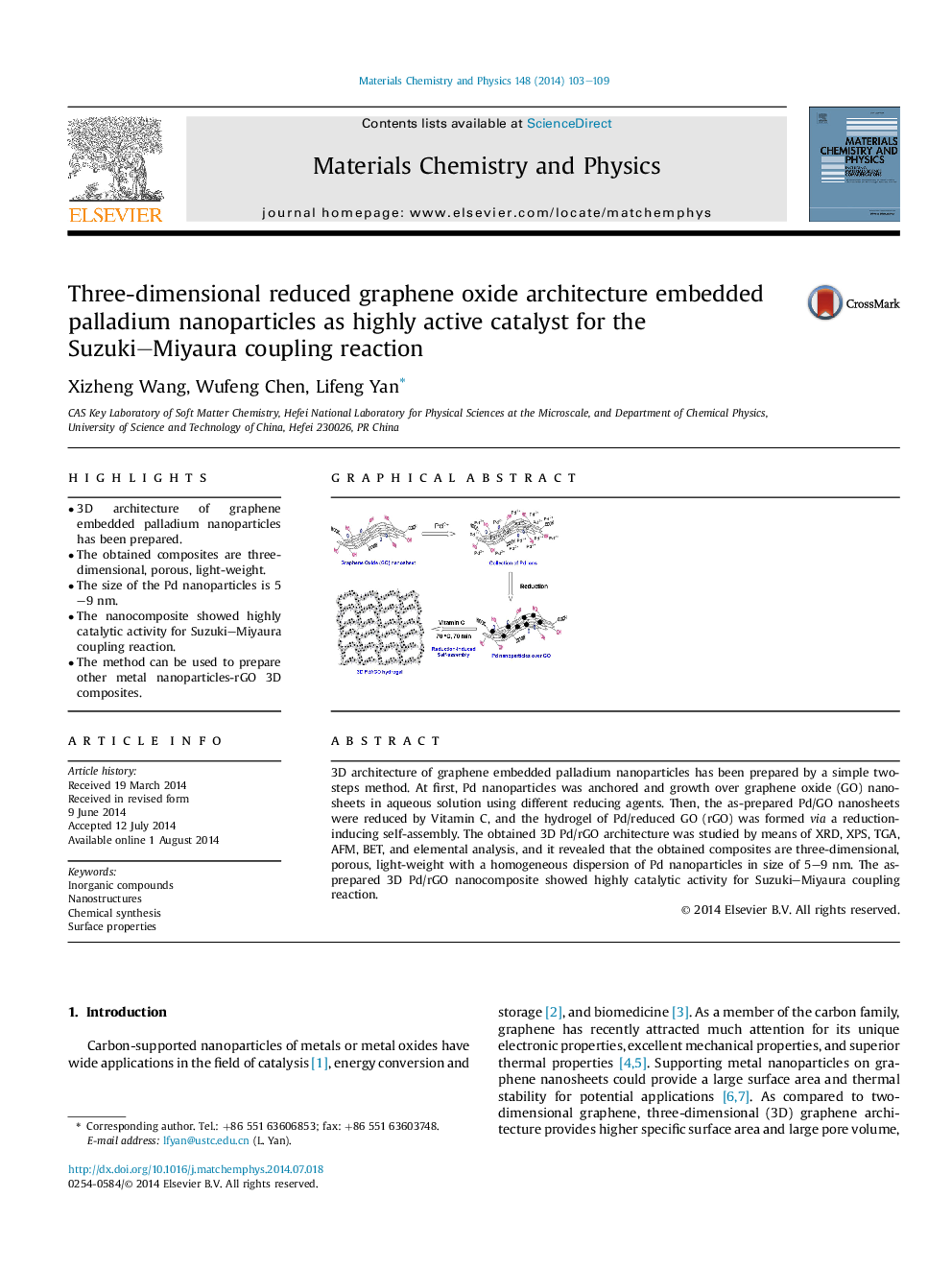| Article ID | Journal | Published Year | Pages | File Type |
|---|---|---|---|---|
| 1521718 | Materials Chemistry and Physics | 2014 | 7 Pages |
•3D architecture of graphene embedded palladium nanoparticles has been prepared.•The obtained composites are three-dimensional, porous, light-weight.•The size of the Pd nanoparticles is 5–9 nm.•The nanocomposite showed highly catalytic activity for Suzuki–Miyaura coupling reaction.•The method can be used to prepare other metal nanoparticles-rGO 3D composites.
3D architecture of graphene embedded palladium nanoparticles has been prepared by a simple two-steps method. At first, Pd nanoparticles was anchored and growth over graphene oxide (GO) nanosheets in aqueous solution using different reducing agents. Then, the as-prepared Pd/GO nanosheets were reduced by Vitamin C, and the hydrogel of Pd/reduced GO (rGO) was formed via a reduction-inducing self-assembly. The obtained 3D Pd/rGO architecture was studied by means of XRD, XPS, TGA, AFM, BET, and elemental analysis, and it revealed that the obtained composites are three-dimensional, porous, light-weight with a homogeneous dispersion of Pd nanoparticles in size of 5–9 nm. The as-prepared 3D Pd/rGO nanocomposite showed highly catalytic activity for Suzuki–Miyaura coupling reaction.
Graphical abstractThe formation of 3D Pd/rGO hydrogel for Suzuki–Miyaura coupling reaction.Figure optionsDownload full-size imageDownload as PowerPoint slide
